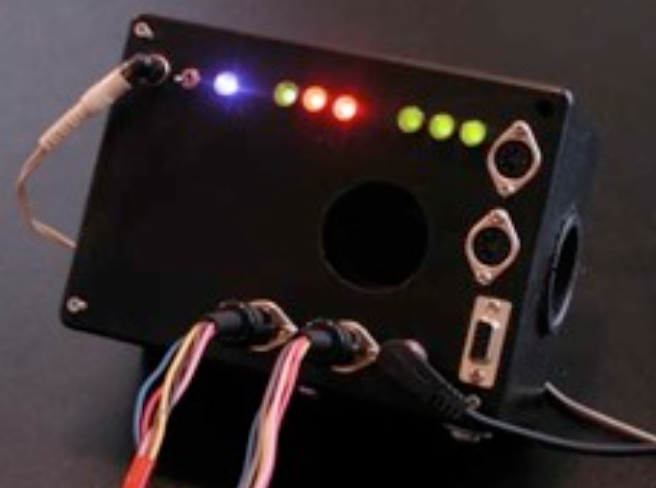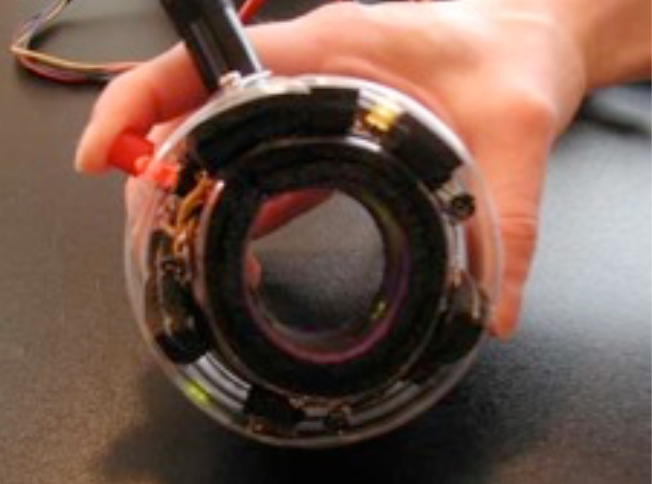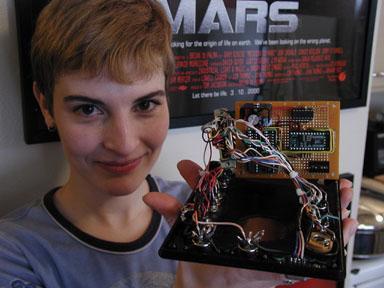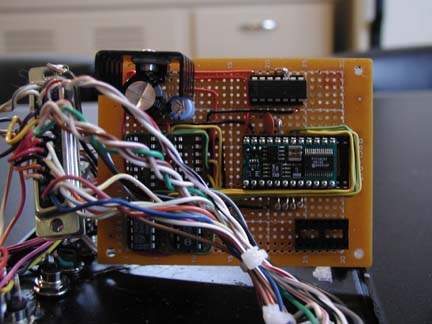Chaos Melody Theory
Making Music with Chaos Theory: Masters Thesis, Elaine Walker, New York University, 2001
1-rx^2 was composed in MAX using Chaos Melody Theory in 1992 (in the Bohlen-Pierce Scale tuning).
Movement 1 | Movement 2 | Movement 3 | Movement 4
Movement 1 | Movement 2 | Movement 3 | Movement 4
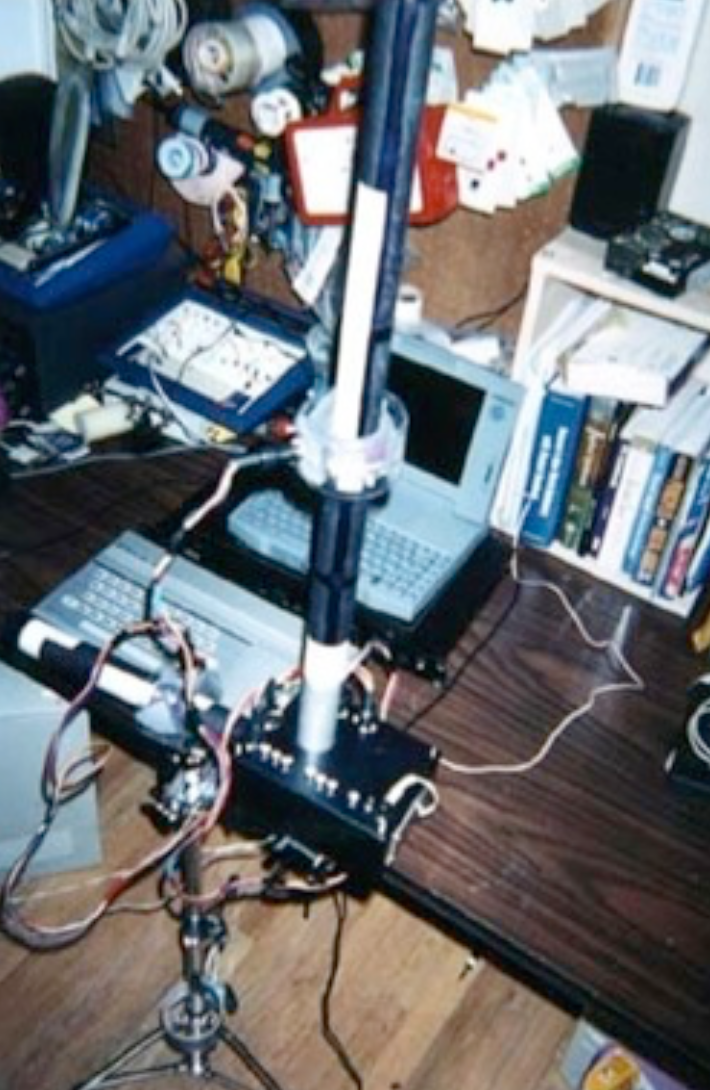
The Chaos Controller:
This is a homemade hardware MIDI instrument that uses the method of Chaos Melody Theory to create beautiful music. Listen to a live improvisation!
Please feel free to build your own! I recommend reading my Masters Thesis (above) first, to understand the process that it uses.
I built the Chaos Controller as my final project for Physical Computing class with Dr. Igoe at Tisch School of the Arts at NYU in 2000. Each student did an “art” project involving the Basic Stamp. My idea was to emulate my Chaos Melody Theory MAX patch (software) with a stand-alone hardware device.
I used stuff I had around the house to build it, including keyboard stand pipes for the two arms, cut-up water bottles and mouse pads to build the two round sliders that go on the poles, and printed black/white paper in the pattern of 3-bit grey code (0 to 7, but out of order so that only one bit changes at a time). Three led lights with accompanying photoresistors are mounted inside of each slider to read the 3-bit greycode. I had the Chaos Controller programmed to use the iterative function, x=1-rx^2, but it could be programmed with a number of iterative functions. One arm/slider combo is for the r value and one is for the x value. The r slider sets the r (chaos) parameter, and it can be continuously changed. A button on the r slider starts the mathematics loop running. The x slider sets the x value and a button on the x slider is available to reset the x value at any time. A controller pedal can adjust the tempo of the iterative loop.
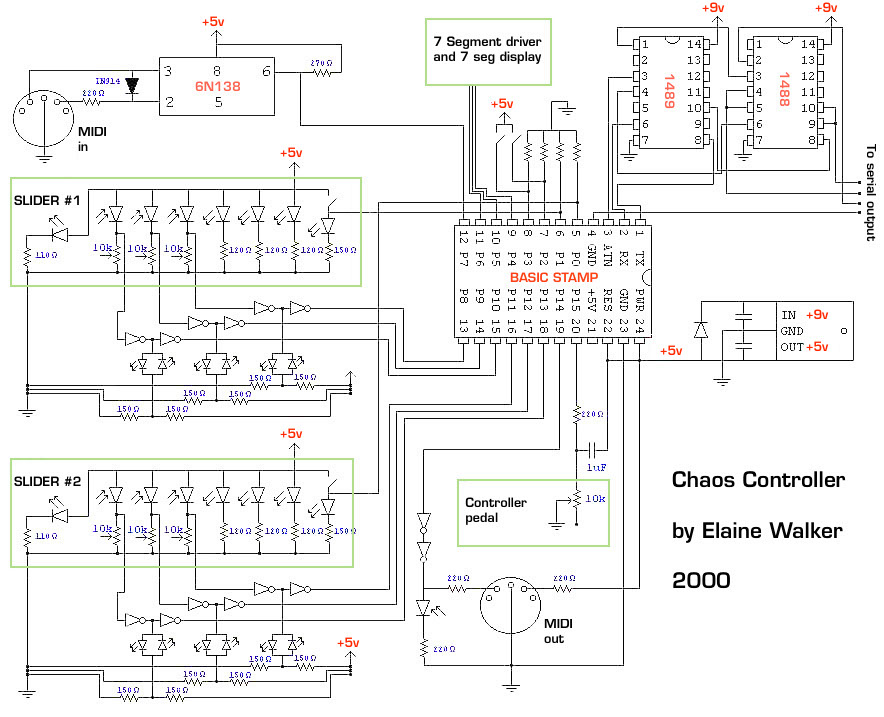
Grab the code for the Basic Stamp controller.
Read some more notes about the Chaos Controller here.
